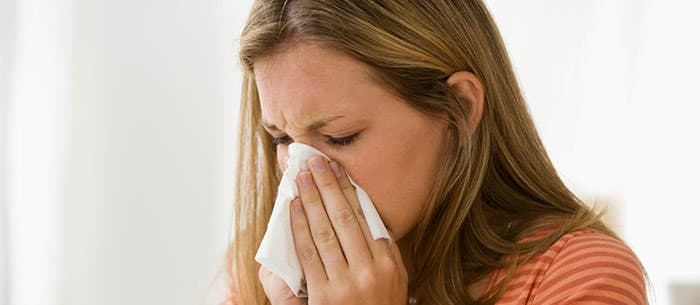Sniffling, coughing, watery eyes. These symptoms sound familiar? They’re common allergy complaints. Whether you’re a professional housekeeper who serves clients with allergies, or you’re cleaning your own home and family members suffer during allergy season, learn more about the connection between cleaning and allergies. >>
When Spring Allergies Strike
Knowing what and how to clean can reduce allergens in the air, alleviate suffering and possibly even minimize reliance on allergy medications.
The most common allergens are house dust mites, mold, pollen and animal danders, according to Dr. Neil L Kao, MD FAAAAI, of the Allergic Disease and Asthma Center. Cleaning areas where they lurk can go a long way toward reducing allergy symptoms. The areas that most people should focus their cleaning efforts are the bedrooms, bathrooms and entryways, he advises.
Here are tips for targeting these three allergy hotspots.
-
Cleaning the Bedroom
In the bedroom, change linens and wash them in hot water at least once a week. To prevent hay fever and pollen allergies, dry sheets in the clothes dryer, not outside.Vacuum under the bed, and avoid storing anything under the bed. Keeping papers, boxes or storage containers under the bed can trap dust bunnies and make cleaning more difficult.
“Cleaning behind dressers, beds, couches and other large pieces of furniture that remain stationary is paramount in reducing allergens,” shares Mysti Reutlinger, author of “The Pantry Cleaner“, about chemical-free cleaning. Tackle these tasks a minimum of once every three months. It’s best to do this kind of deep cleaning once a month, if possible.”
-
Cleaning the Bathroom
In the bathroom, a little bit of prevention goes a long way toward reducing mold and mildew that can cause allergies. Bathrooms are usually wet, plus they’re used for cleaning ourselves off, so human dandruff, dust, hair and mold accumulate there, Dr. Kao says.Avoid fully carpeted bathroom floors. Instead, use a washable bath mat over a ceramic tile or vinyl floor. Run an exhaust fan or dehumidifier to keep the bathroom humidity below 50 percent.
Pay special attention to your shower curtain, as mold can easily develop on it. Reutlinger suggests running fabric shower curtains through the washer at 130 degrees or higher every week and cleaning plastic ones weekly. “This will reduce the amount of mold growing in the bathroom and can quickly reduce asthma reactions,” she says.
-
Cleaning the Entryway
It’s important to focus on all entry ways because they’re how pollen and mold from the great outdoors are usually tracked into the house. Give any front, back and side doors a regular and thorough cleaning — don’t forget about doggie doors or animal entryways.To reduce symptoms from outdoor allergens while inside the home, Dr. Kao recommends implementing a no-shoes-in-the-house policy. Remove shoes when you first enter the house and place them on a mat — which you wash frequently.
Vacuum high-traffic areas (including entryways, frequently used hallways and pathways to the living room, kitchen or family room) at least twice weekly. If you have pets, vacuum daily.
Dr. Kao recommends using a vacuum with a HEPA filter. HEPA is a defined government standard for filtration, and allergens can’t get through a HEPA filter. “Once they’ve been sucked up, they are in the bag and gone.”
Go for a Green Clean
In addition to targeting these three hotspots, you should also pay attention to what you’re cleaning with. If you’re using harsh chemicals, perfumed cleaners or anything in an aerosol spray bottle, you could be adding dangerous allergens and chemicals into the air, which can exacerbate asthma and cause headaches and other uncomfortable symptoms.
“For people with allergies, spray and fine-dust cleaners tend to cause more severe reactions due to lung and blood exposure; whatever we breathe is introduced to our bloodstream through the respiration process,” Reutlinger explains.
Both Kao and Reutlinger recommend cleaning with a damp cloth. “The moisture will help trap the allergens instead of lifting them in the air,” Reutlinger says.
Learn more about the 7 Benefits of Green Cleaning and start cleaning with these allergy-fighting tips in mind.
Dawn Allcot is a freelance writer, blogger and inbound marketing consultant who frequently covers home design, renovation and cleaning topics for a variety of websites and blog networks. With two kids, three cats and seasonal allergies, she’s always cleaning her four-bedroom, one bath Long Island cape-style home…yet it’s never clean for some reason.




